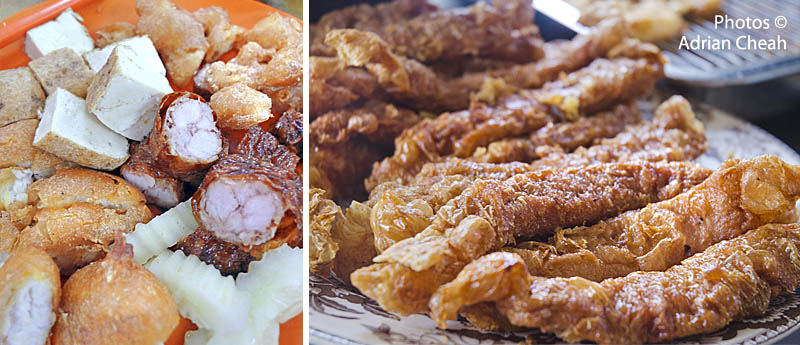Pomelo kerabu, tu ka chor, inchi kabin and more at Sifu Nyonya Cuisine

Sifu Nyonya Cuisine, located at Jalan Pintal Tali, offers an authentic Nyonya dining experience. At the culinary helm of the restaurant is 71-year-old Madam Beh Geok Wah, whose culinary prowess is showcased through a menu featuring over 40 dishes. Some recipes are cherished heirlooms passed down through generations, ensuring that the essence of Nyonya cooking is preserved with every flavourful bite.
Continue Reading
Reinventing kuih kapit (love letters)

"Perhaps imagination is only intelligence having fun" – George Scialabba
The "love letter", more commonly known as kuih kapit (a paper-thin crispy, fan-shaped biscuit), is an essential feature during Chinese New Year. However, when a classic item like kuih kapit becomes deeply entrenched in tradition, introducing a daring innovation to reinvent it can evoke mixed reactions – either embraced with enthusiasm for its novelty or met with scepticism and disapproval.
Continue Reading
Lotuss Nyonya Kitchen – where maximalist style meets maximum flavours

A rendezvous with friends should always set the stage for a fun-filled outing. However, as true-blue Penangites, our palates demand nothing less than something seriously ho-chiak (delicious in Hokkien), the kind that commands attention above all else. This must be closely followed by the thrifty wisdom of value for money. Moreover, if an attractive ambience is coupled with warm friendly service, the escapade would indeed be a memorable one. Lotuss Nyonya Kitchen, located in the heart of George Town, seems to have it all.
Continue Reading
Auntie Gaik Lean Old School Eatery – Chinese Peranakan cuisine cooked with love

Born into a Chinese Peranakan family, I often find my culinary cravings leaning towards other cuisines – whether it is Chinese, Thai, Italian, Japanese, Vietnamese, Continental, Mexican, Indian or Malay – when dining out, unless I am hosting guests from abroad who crave for Nyonya cuisine. Sometimes when time allows, I will gladly roll up my sleeves and prepare a Nyonya feast to ensure that they depart Penang with a lasting impression of the vibrant and unique flavours that define Nyonya cuisine.
Continue Reading
The colourful bubur cha cha and pengat – almost similar yet different

In Malay, “bubur” means “porridge”. As "cha cha" is a homophonic with the Hokkien "che che" (meaning "abundance"), it is a dish synonymous with unity and happiness in abundance. Although there are various theories, there is no one definitive consensus on its origin or what the name of the dish actually means.
Continue Reading
Richard Rivalee brings you delicious pork-free Nyonya cuisine

I truly believe that if one desires to live a purpose driven life, one has to wear one's heart on one's sleeve and allow passion to fuel the journey. One such brave man I know is Richard Rivalee, always smiling and bubbling with gaiety.
Continue Reading



















